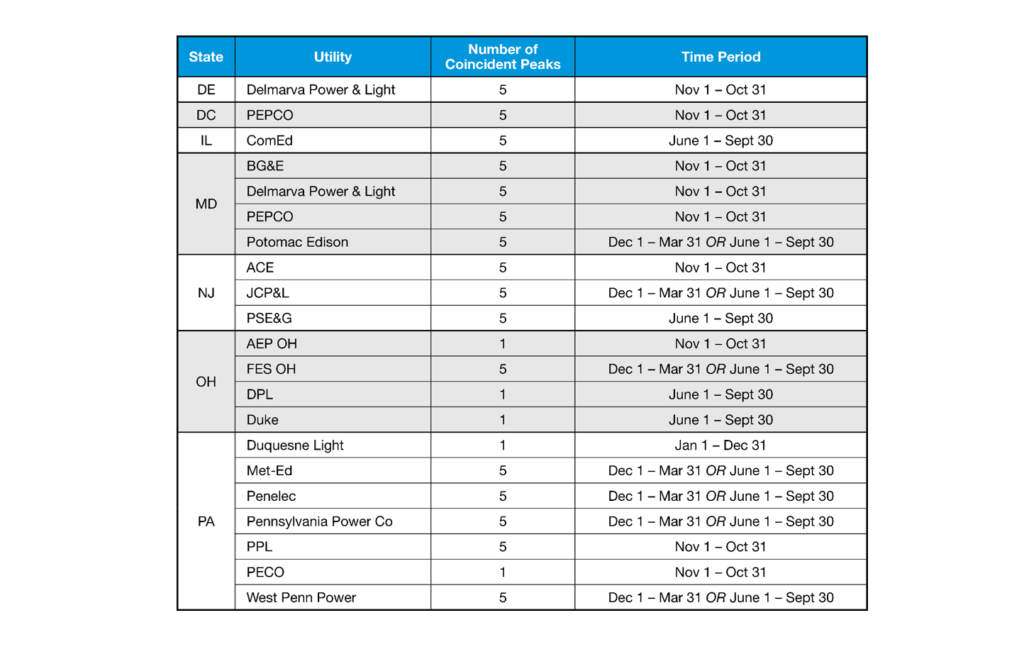How reducing transmission and capacity costs can lower your energy bills
There are several factors and costs that make up an electricity price. While weather and fundamental market conditions cannot be controlled, there are elements of your total energy price that can be. How and when you use energy can have a positive impact on other lesser-known charges like capacity and transmission costs. Capacity is essentially the insurance of having adequate electric supply available during peak demand hours on the electric system. Transmission costs are the fees associated with moving electricity through the grid.
In competitive electric markets such as New England, New York, Texas, and the 13 states included in PJM, both capacity and transmission charges can be reduced through management tactics. Lowering these costs can have a significant impact on your monthly and annual energy spend.
About transmission costs
Currently, there has been a lot of movement in transmission costs within regions of PJM. Most recently, the capacity auction that was originally slated for January 25, 2022 was moved to May 1, 2022. In addition, the Federal Energy Regulatory Commission (FERC) is reverting to the previous market design for the May 1, 2022 auction; a backward-looking Net Energy & Ancillary Services Revenue Offset rather than forward-looking. The result could lead to an increase in charges to end-users. The extent of these changes is currently unknown.
In PJM, the mechanism that transmission owners use to recover their annual transmission costs and revenue requirements from PJM customers is called Network Integration Transmission Service (NITS). NITS charges can change as costs associated with operation and maintenance, tax, cost of capital or rate base, and transmission owner cost of services fluctuate.
How transmission costs are calculated
Each local distribution company within PJM has a network transmission service peak load contribution (PLC) requirement. Like capacity tag costs, NITS (and Transmission Enhancement Charges) are calculated based on a customer’s peak-load demand and are referred to as the Transmission Tag, or Transmission PLC. The transmission tag uses the following formula:

Your Network Service Peak Load (NSPL) is calculated based on the highest demand hour(s) of the year and can be decided upon by the local distribution utility.
About capacity costs
Simply, electric generators are paid to guarantee that there will be enough electric supply available to meet forecasted demand requirements into the future. These costs are pre-determined using competitive auctions. While the actual cost of the capacity is determined system-wide, your individual capacity tag is established by your electricity demand when the system is peaking. A business’ capacity tag is tied to the number of capacity units that the business will require on the peak demand day(s) of the year.
As capacity costs fluctuate by region, the benefit of understanding and managing the capacity tag is growing in importance. By effectively predicting the potential peak day(s), organizations can reduce their electricity usage at the right time to reduce their capacity tag for the next capacity year. A reduction in the capacity tag will help mitigate any increases in capacity cost going forward.
How capacity charges are calculated
The capacity charge is one cost that can be affected by proper management. Your capacity charge is made up of two main components: capacity cost and capacity tag.
Capacity cost: The generation price set per kilowatt-hour
Capacity tag: The total kilowatt-hours used by a facility on the peak hour(s) of the peak day(s)

What you can do to reduce costs
There are ways that commercial customers can take action to reduce and control transmission and capacity costs. Depending on your risk budget tolerance, it may make sense for you to “pass through” these costs so that you can manage them through demand reduction measures to obtain lower tags. By effectively predicting the potential peak day(s), companies can temporarily reduce their electricity usage to lower their tags for the next capacity year. A reduction in the transmission and capacity tag will help mitigate the increase in the costs going forward and generate savings.
Peak Days by Utility in PJM Market

Premier Power Solutions assists clients in developing a tailored and customized capacity and transmission tag management program as part of a comprehensive energy strategy. Contact us today to learn how we can help you to better understand the implications of an escalating transmission and capacity market and plan accordingly.

